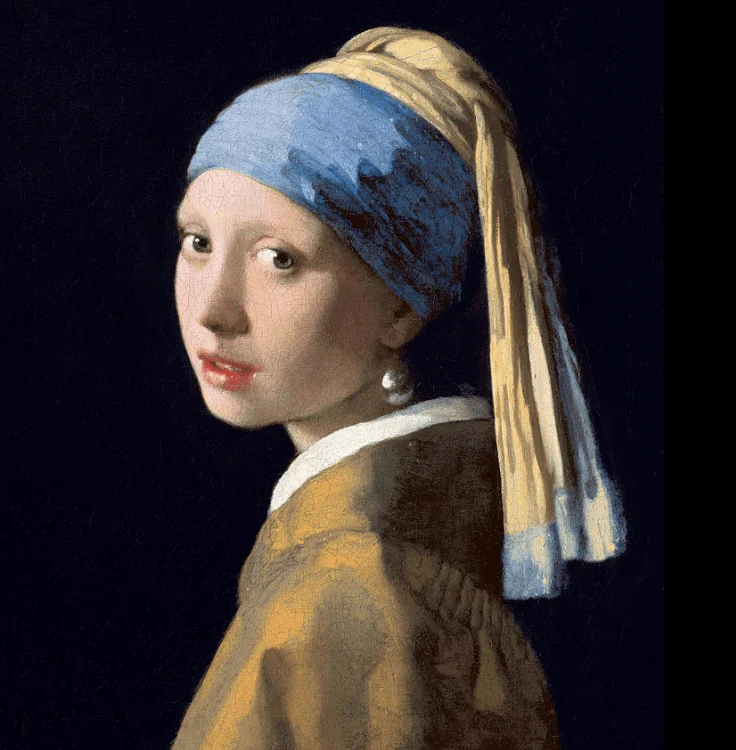He’s considered to be one of the greatest Dutch painters of all time as he left behind an oeuvre of amazing delicate paintings.
In this post, you’ll discover the ultimate list of facts about Johannes Vermeer.
1. This was his full name
His full name was “Jan Vermeer van Delft,” with “Jan” being the short version of “Johannes” and “Delft” referring to the town he was born.
2. He wasn’t a superstar during his life
Johannes Vermeer was born and raised in the Dutch town of Delft.
He was a respected painter in his hometown but wasn’t known outside of it. His life revolved completely around art and he considered himself to be first and foremost a painter, even though he also collected art.
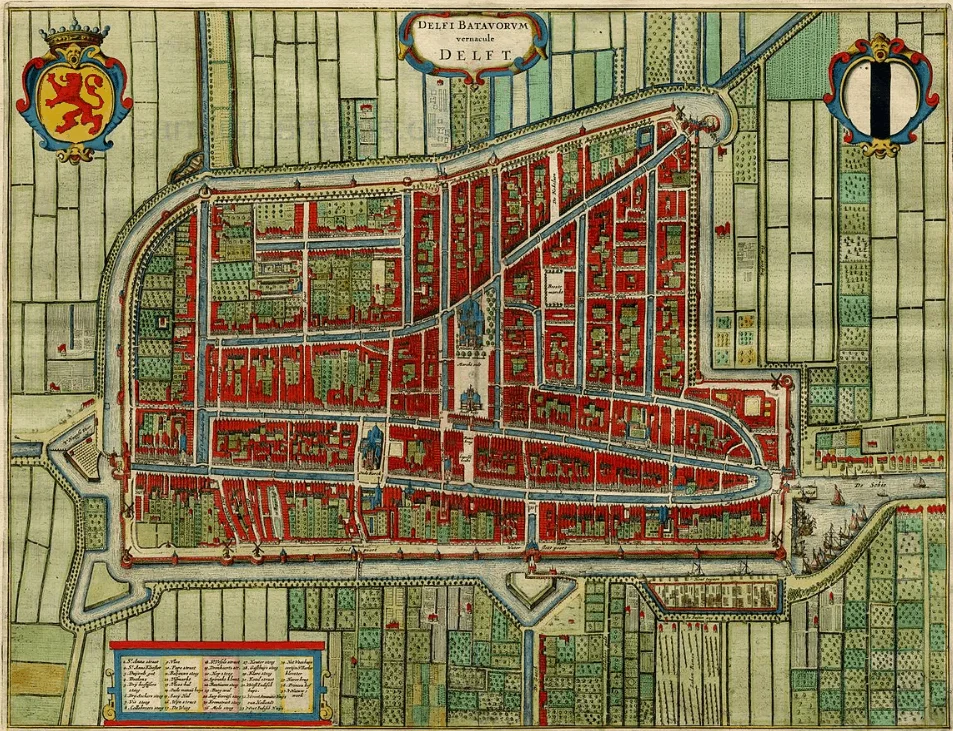
3. He was one of the greatest painters of the Dutch Golden Age
Regardless of his humble life as a regional painter, he is now recognized as one of the greatest painters of the “Dutch Golden Age,” a period during and after the Eighty Years’ War (1568–1648) for Dutch independence.
Other famous painters of this period are Frans Hals and Rembrandt, exponents of the period that the Dutch Republic was the most prosperous nation in all of Europe.
4. Little is known about the man himself
There isn’t a whole lot of documentation regarding Johannes Vermeer’s life. In fact, we don’t even know the exact day that he was born, only that he was baptized on October 31 of the year 1632.
He came from a humble family and his father, named Reijnier Janszoon, was an ordinary middle-class worker in the silk and textile industry. Later in his life, he also had a bar called “Mechelen” in the town square of Delft.

His father was an art dealer as well though and it’s logical that the young Johannes got his inspiration to become a painter from here. When his father died in 1652, Johannes Vermeer took over the art dealership of his father.
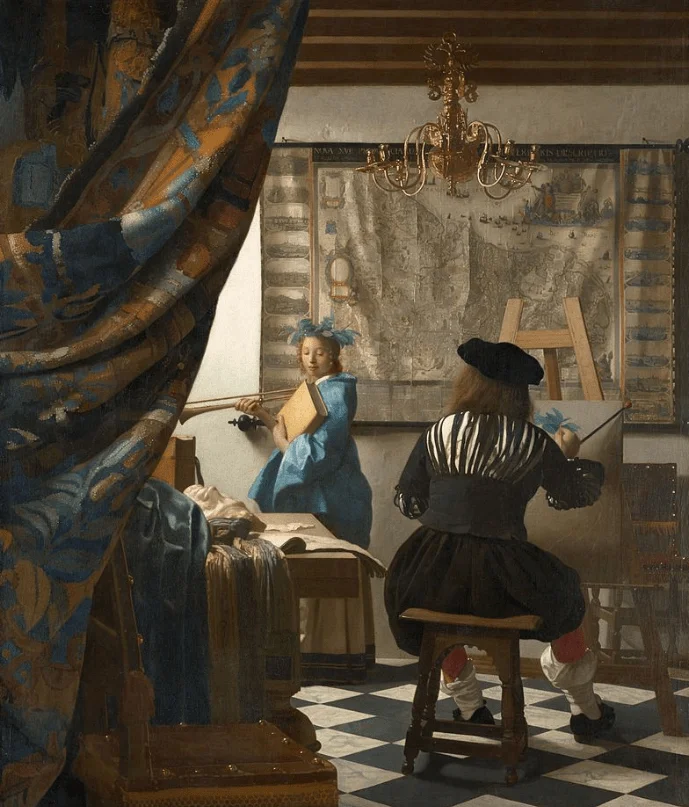
5. He converted to Catholicism to get married
On April 5, 1653, Johannes Vermeer got married to Catharina Bolenes (or “Bolnes”), a Catholic woman. Vermeer himself though was born and baptized within the “Reformed Church” which meant he had to convert to Catholicism before getting married.
It doesn’t appear that Vermeer had a problem with this and his conversion was made with conviction.
The couple ended up having a total of 15 children. 4 of them died as an infant but had been inscribed in the local register as “child of Johannes Vermeer.”
6. It’s possible that Vermeer taught himself
There isn’t any documentation to prove who actually taught Johannes Vermeer as a young painter. Based on his earliest works, big religious pieces, it appears that he was influenced by “Utrecht Caravaggism,” a number of Baroque artists from Utrecht who traveled to Italy and became influenced by the works of Caravaggio.
He changed his style though in 1656 and it appears that he went his own way and figured it out for himself, without the help of a teacher and without being influenced by any other painter.
7. He joined his city’s guild without paying
Vermeer joined the Guild of Saint Luke on December 29, 1653. This Saint Luke’s guild was the most significant and prestigious guild for painters and other artists in this period in Europe.
To give an example, Leonardo da Vinci was also admitted to the Guild of Saint Luke in the year 1472 when he was just 20 years old.
Vermeer didn’t pay the usual admission fee to join the guild, which both proves that he was experiencing financial difficulties and that he was considered to be a talented artist.
He would eventually be elected president of the guild 4 times, in the years 1662, 1663, 1670, and 1671.
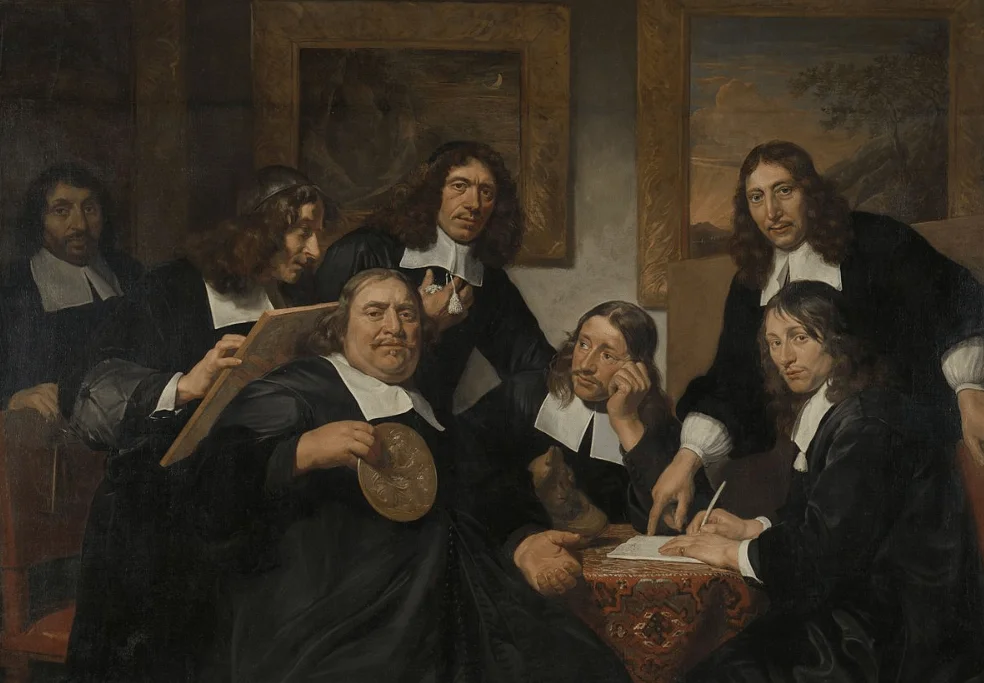
8. He started out painting religious concepts
One of the most interesting facts about Johannes Vermeer is that the first few of his paintings were actually inspired by religion and Mythology.
Two of these paintings are:
Christ in the House of Martha and Mary
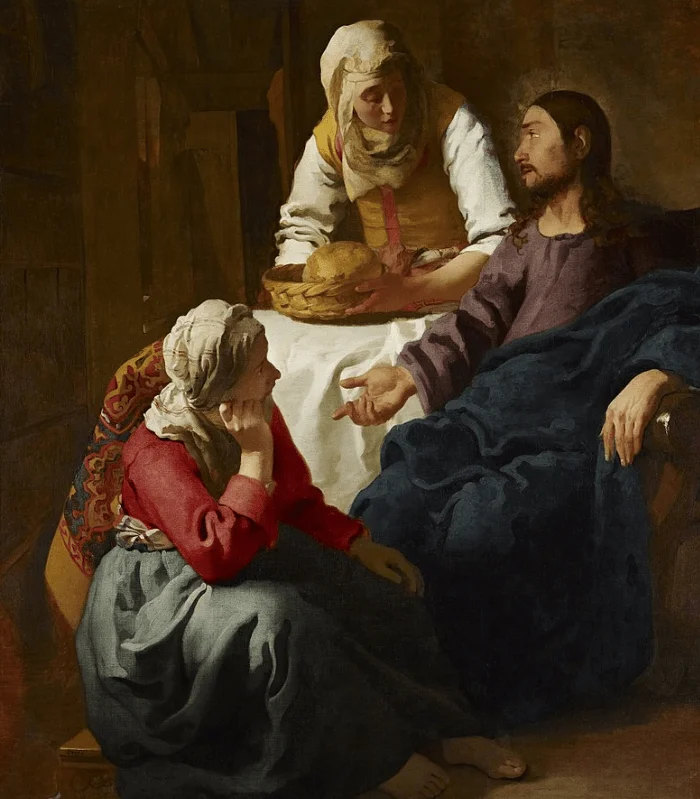
Diana and her Companions
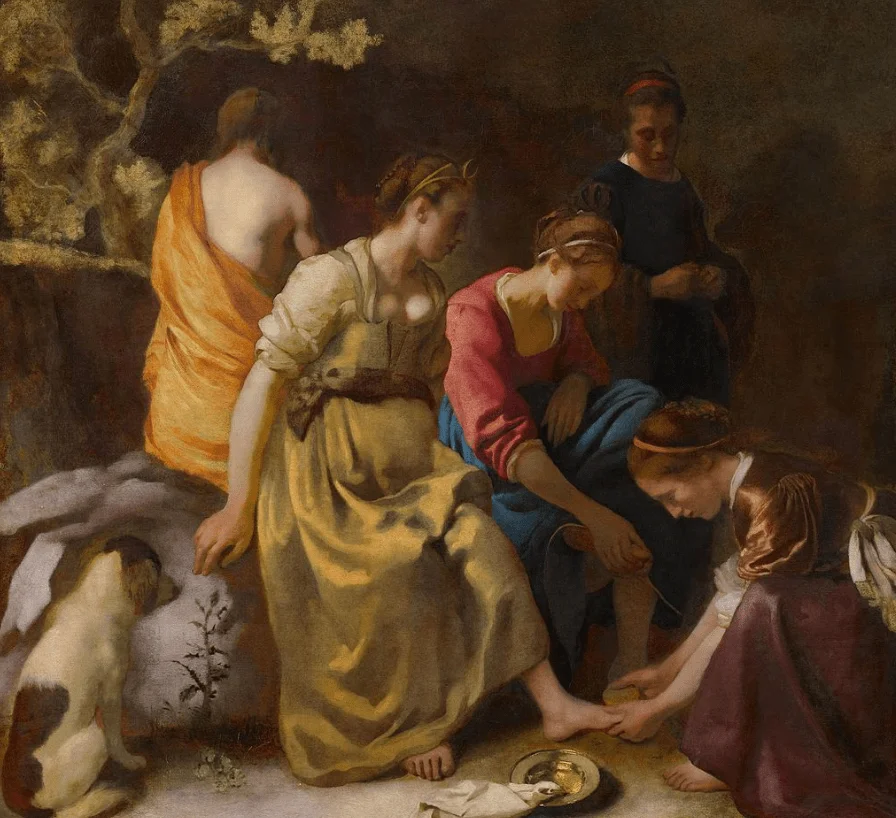
9. Vermeer changed to paintings of everyday life
It’s in the year 1656 that he changed his inspiration and almost solely painted concepts of everyday life. Many of these paintings portray women who are busy doing daily chores.
16 of his paintings include a depiction of a young lady and in 6 of those paintings, she is either reading or writing.
Below you can see two examples of the common theme that Vermeer used in his paintings:
Lady writing a letter with her maid
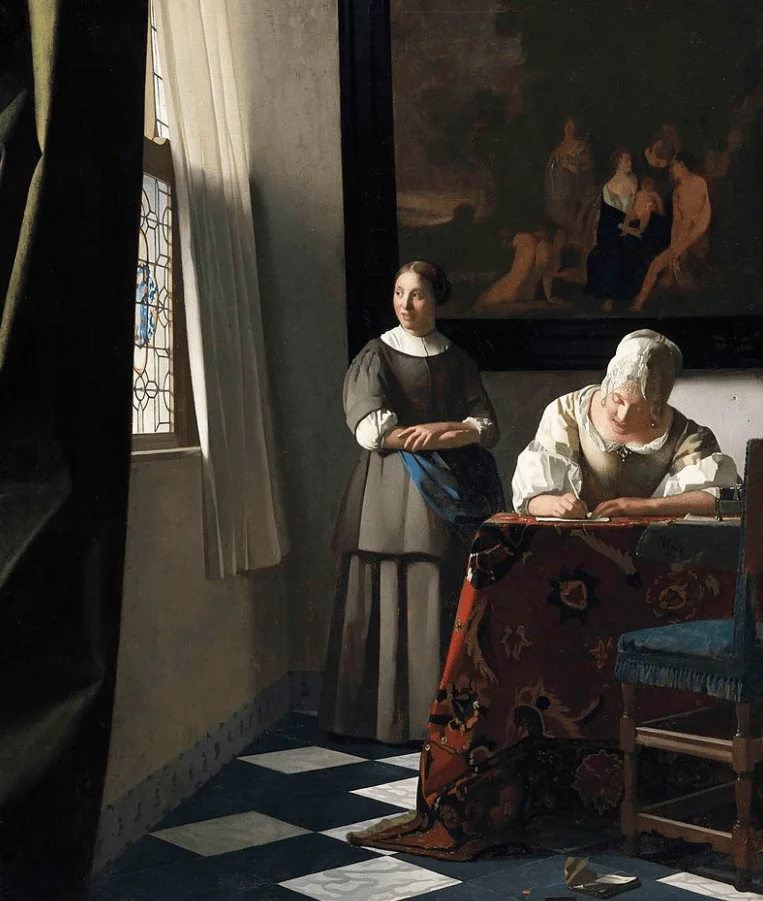
A Lady Writing a Letter
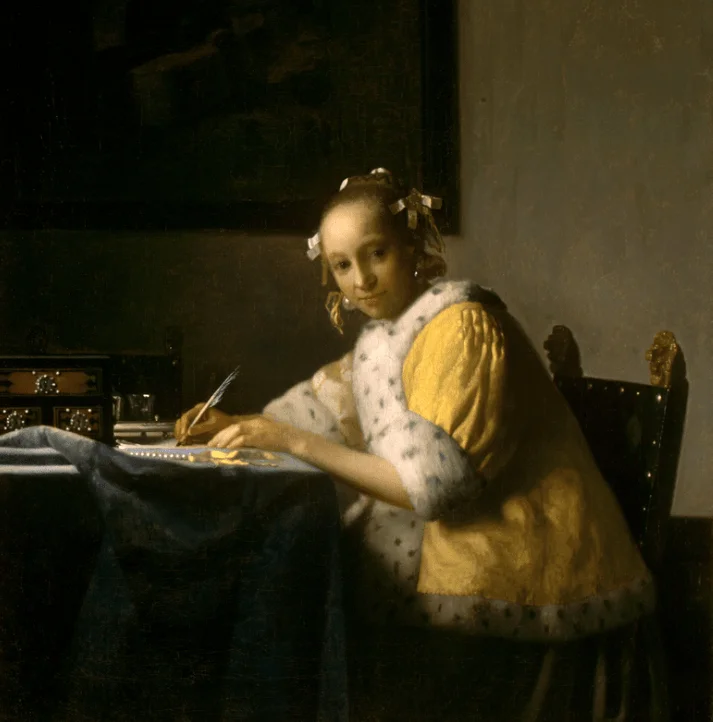
10. He wasn’t a prolific painter
One of the most fascinating facts about Johannes Vermeer is that he painted very slowly. Because of this, he was only to complete 3 paintings every year.
Only 35 paintings are recognized with certainty to be Vermeer’s of which 21 have been signed. About 4 or 5 paintings are believed to be his but can’t be confirmed, and it’s estimated that he created a total of between 40 and 50 paintings in his lifetime.
11. He probably painted half of his work for just one buyer
It’s possible that Johannes Vermeer only worked for just one single buyer for half of his career. This can be assumed because the son-in-law of Pieter van Ruijven, a known art collector in the area, left behind 21 of Vermeer’s paintings in the year 1695.
Another anecdote that points in this direction is the fact that he had no completed paintings in his possession when a French art collector by the name of Balthasar de Monconys visited him in 1663 to see his work.
12. He used expensive imported materials
Vermeer was one of the few painters who used expensive pigments to create his works so lavishly. This is surprising because during his lifetime he wasn’t exactly rich.
Especially the use of “Lapis Lazuli“, better known as “ultramarine,” was used frequently by the painter. This color comes from rocks mined in the region of modern-day Afghanistan.
Even after the “disaster year” or “rampjaar” of 1672 he used these expensive pigments lavishly, which obviously means that he was supplied with them by the collector who ordered the paintings from him.
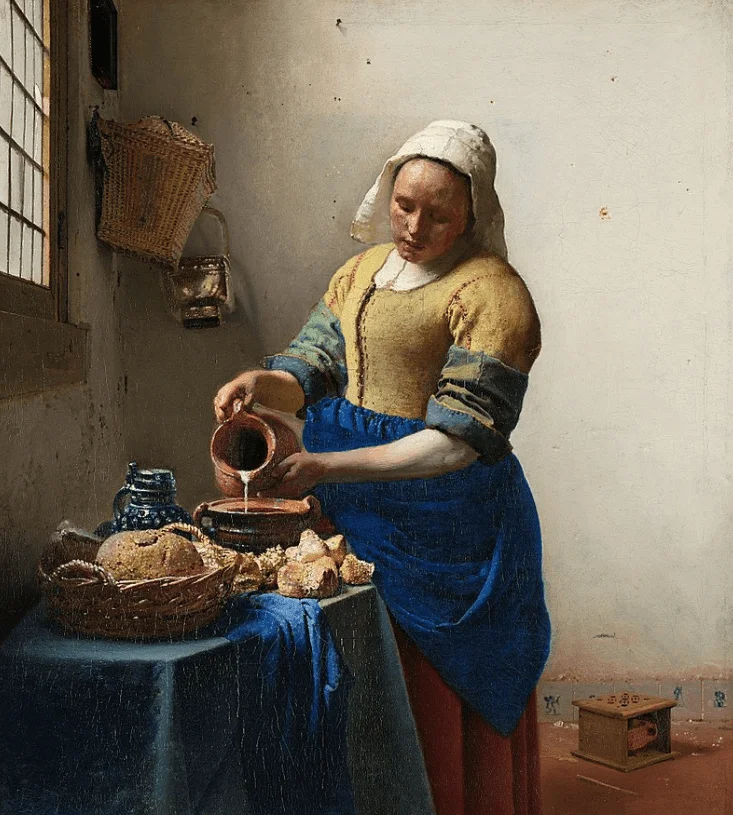
13. Did Vermeer get mechanical aid?
Some scientists believe that Johannes Vermeer used a “Camera Obscura” to create his paintings. This tool could be used to project a scene onto a wall in a dark room, which was located inside another room. This would have made it much easier for Vermeer to create his paintings.
The fact that Vermeer didn’t use initial draw lines and achieved a nearly perfect perspective in his paintings points in this direction.
Finally, there’s also the fact that Vermeer created his paintings in the same room. Only a few of his paintings are actually painted elsewhere, one of them being a view of his hometown of Delft.
Whether or not he used a camera obscura or any other visual aid remains a point of discussion, as there is no conclusive historical evidence to support the claim.
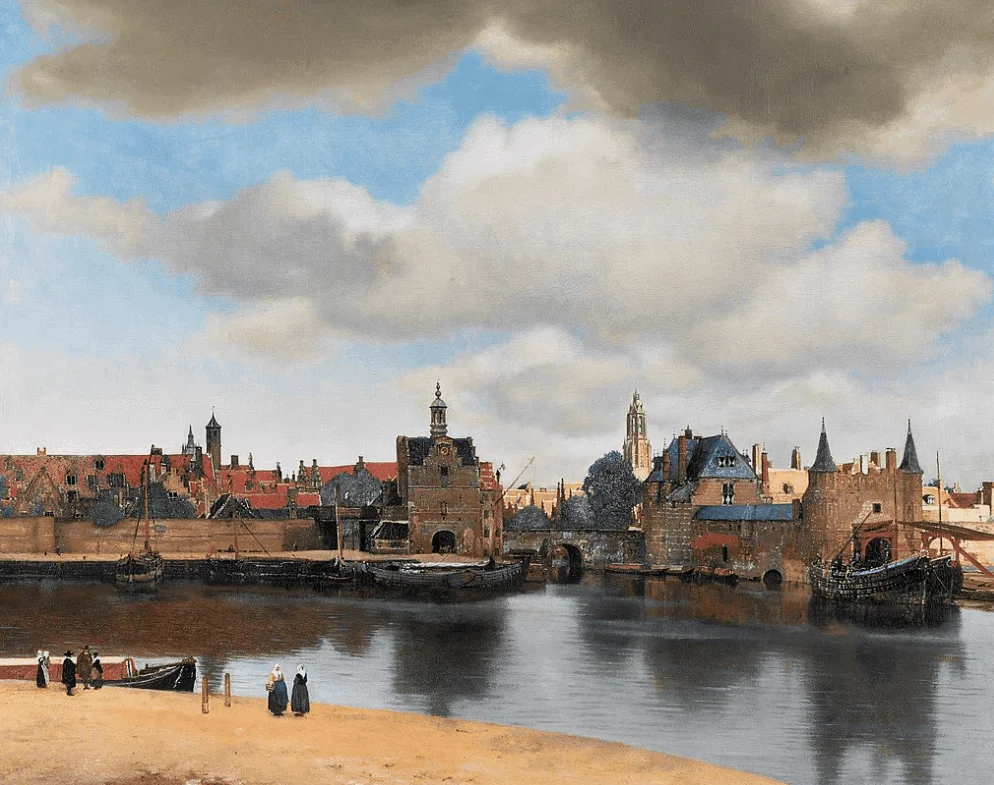
14. Vermeer became depressed in 1672
The “Disaster Year” for the Dutch Republic in 1672 as a result of the Franco-Dutch War didn’t do Johannes Vermeer any good. The demand for art dropped to nearly zero so he wasn’t able to sell his paintings anymore.
On top of that, he had a huge family of 11 children of which 10 were still underage. He wasn’t able to provide for them anymore and started collecting a lot of debt.
The only account related to his death came from his wife as she explained the situation to her creditors in this way:
During the ruinous war with France he not only was unable to sell any of his art but also, to his great detriment, was left sitting with the paintings of other masters that he was dealing in. As a result and owing to the great burden of his children having no means of his own, he lapsed into such decay and decadence, which he had so taken to heart that, as if he had fallen into a frenzy, in a day and a half he went from being healthy to being dead.
Vermeer’s wife regarding his death.
Johannes Vermeer suddenly died in December of the year 1675.
15. His paintings were “rediscovered”
Because he wasn’t famous outside of his own hometown of Delft and to a lesser degree The Hague, his work fell into obscurity for two centuries after his death.
In fact, many of his works weren’t even being attributed to him but to better-known artists such as Metsu or Mieris.
It wasn’t until Théophile Thoré-Bürger, a French journalist and art critic, performed thorough research on his works and published his findings in the “Gazette des Beaux-Arts” in 1866 that Vermeer finally acquired international attention and his paintings skyrocketed in value.

16. His paintings are located in 7 different countries
Want to see some of Vermeer’s paintings? His paintings are on display in 7 different countries all over the world!
- The Netherlands – Rijksmuseum, Amsterdam – Mauritshuis, The Hague
- Germany – Gemäldegalerie, Berlijn / Dresden – Städel Museum, Frankfurt
- The United Kingdom – National Gallery, Londen – Buckingham Palace, London
- France – Louvre, Paris
- Austria – Kunsthistorisches Museum, Vienna
- Ireland – National Gallery of Ireland, Dublin
- United States – Metropolitan Museum of Art, New York – Frick Collection, New York – National Gallery, Washington D.C.
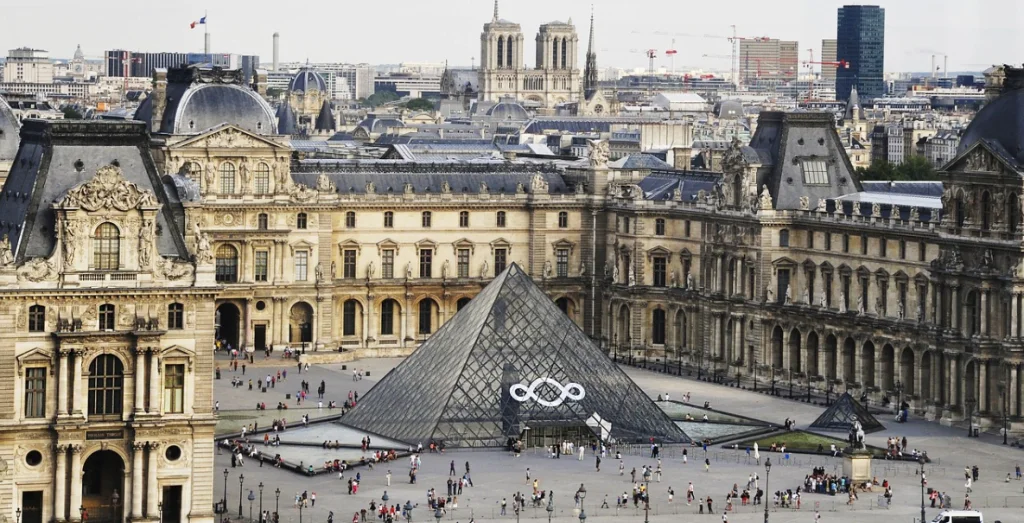
17. A movie was made about Vermeer
A novel called “Girl with a Pearl Earring” (1999), named after Vermeer’s most famous painting was turned into a movie in 2003.
The movie with the same name depicted a fictional story of Vermeer and starred Colin Firth as Vermeer and Scarlett Johansson as “Griet,” a servant in his household.
